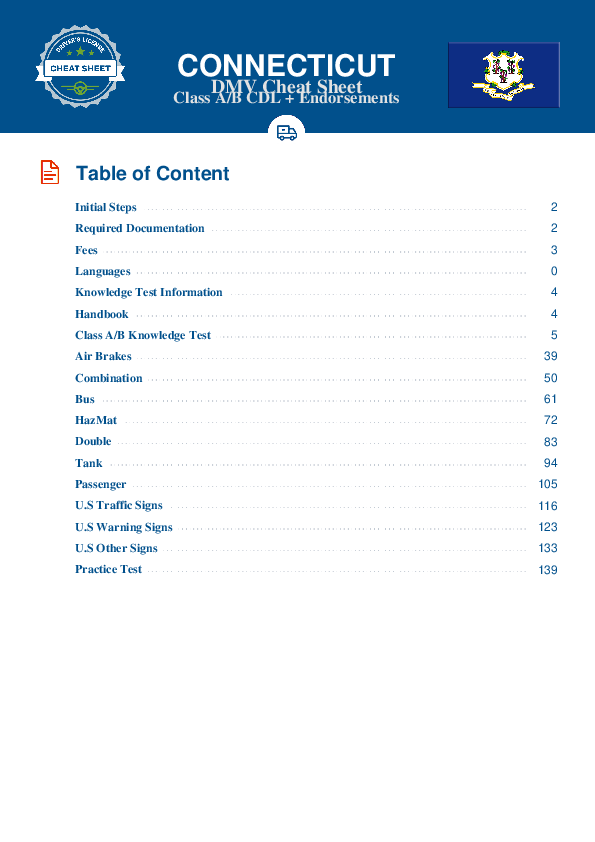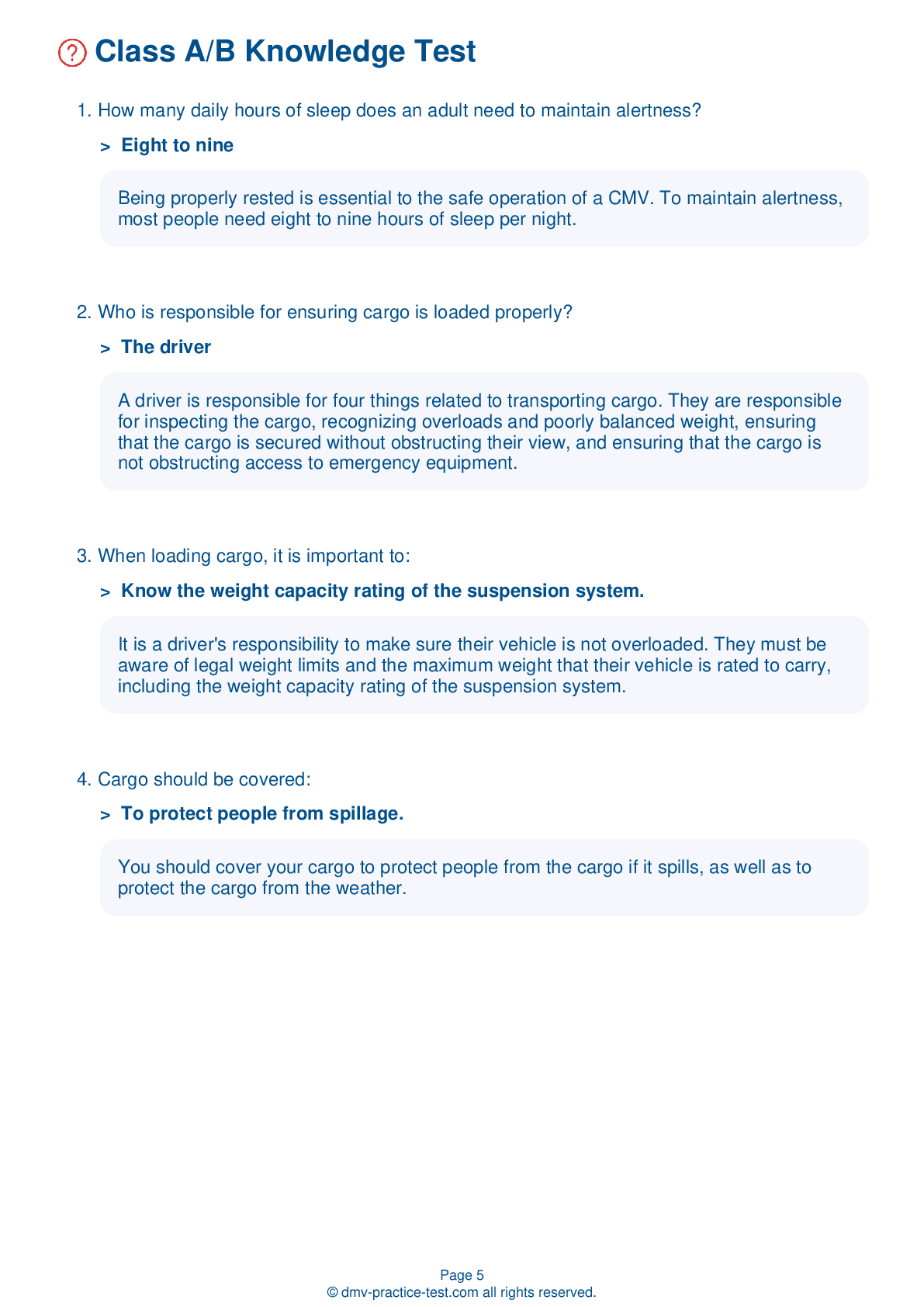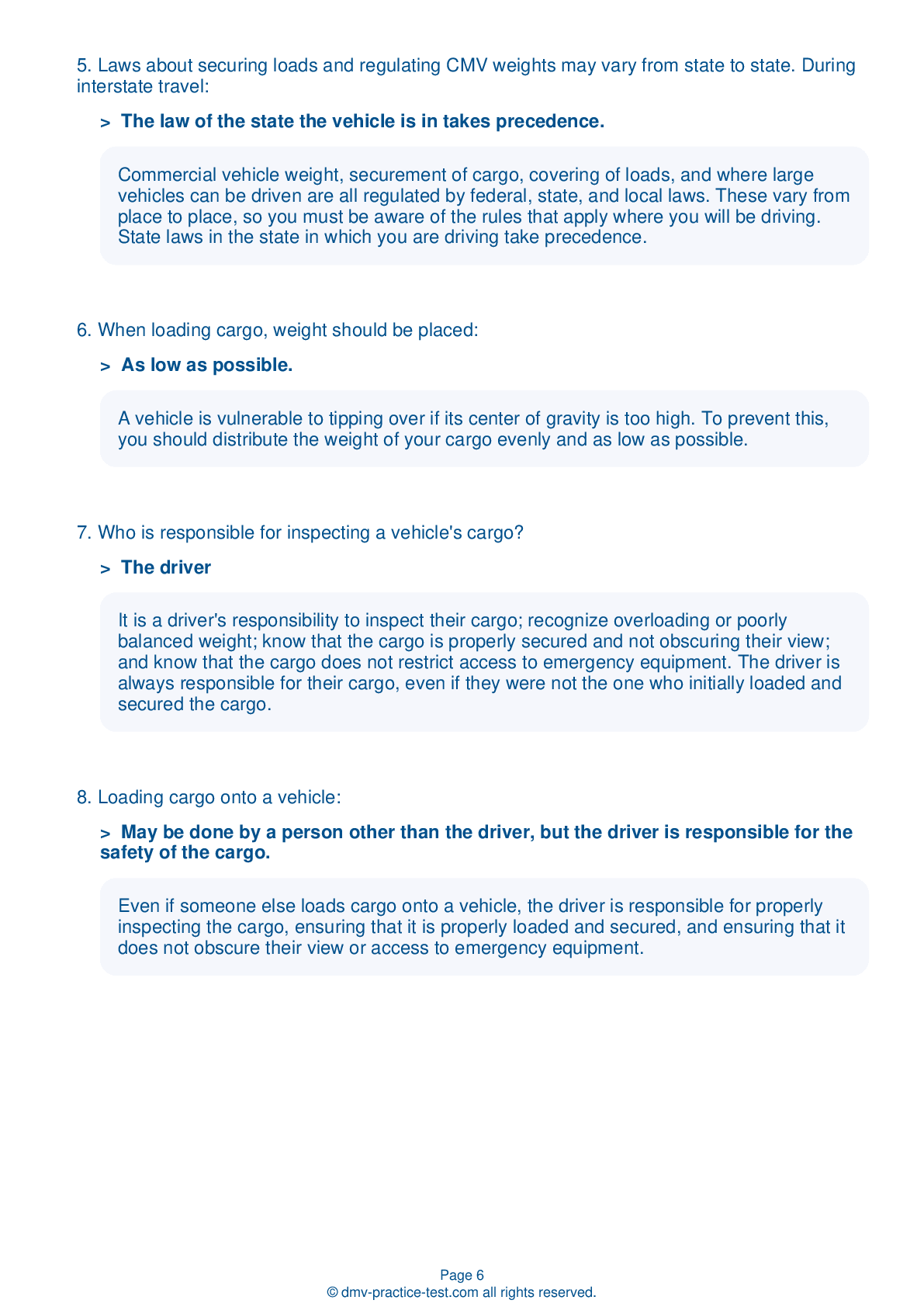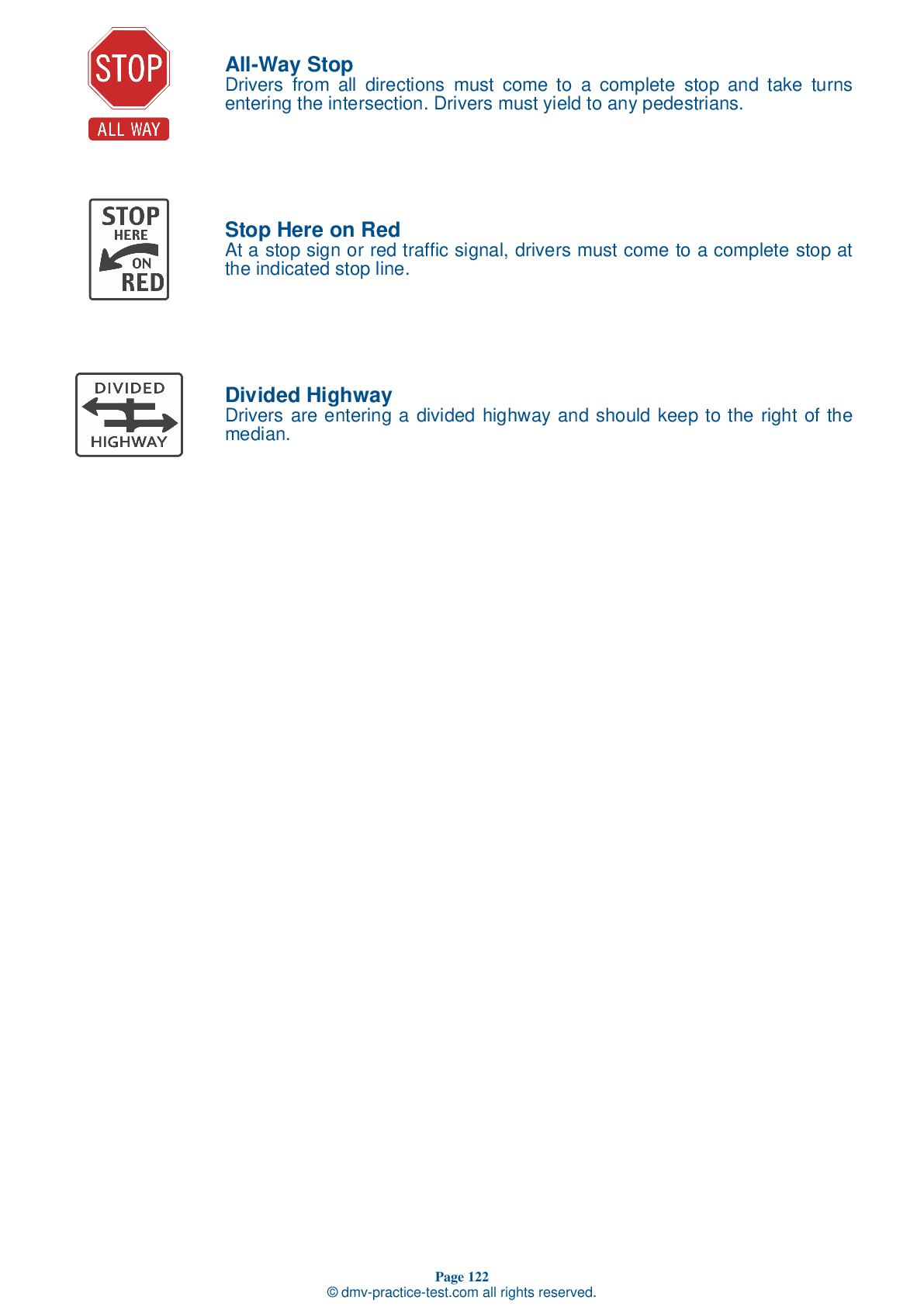Double Triple Test | Connecticut 2025 #1 Page 2 of 3
Train for FREE with our Connecticut CDL double triple practice test online. The official exam test consists of several obligatory parts, with all of them checking your knowledge of different blocks of road rules. If you need to obtain a CT CDL double triple license in 2025, practice as much as possible. Free sample tests published on our website will help you check and improve your knowledge and boost your grades. Please bear in mind that DMV requirements may vary from state to state.
8 . Which of the following is not an example of a distracted person that motorists should be worried about?
You should be cautious when you are near people who are not paying attention to the road. Be wary of drivers who are engaged in conversation with passengers, children near the road, and road workers.
9 . The service air line is attached to the:
The service air line carries air and is controlled by either the foot brake or trailer hand brake. The service air line is attached to relay valves, which allow the trailer brakes to be applied quickly.
10 . When glad hands are coupled, the seals should be pressed together at a ____ angle.
When coupling, be sure to couple the proper glad hands. When glad hands are connected, the seals should be pressed together at a 90-degree angle.
11 . ____ make up the emergency brake system.
In an air brake system, there are three different braking systems: a service brake system, a parking brake system, and an emergency brake system. The emergency brake system uses parts of both the parking and service brake systems.
12 . Where must placards be placed?
If a vehicle is carrying hazardous materials that require placarding, there must be identical placards placed on the front, rear, and both sides of the vehicle.
13 . What happens when a vehicle hydroplanes?
On a wet road, it is possible for a vehicle's tires to lose traction with the road surface and begin to glide along on the layer of water. This is referred to as hydroplaning. Hydroplaning can occur at speeds as low as 30 mph.
14 . In a vehicle with dual air brakes, what happens if one system is low on pressure?
In a dual air brake system, if one of the air systems gets very low on pressure, either the front or rear brakes will not be operating fully. You should bring your vehicle to a safe stop and have the air system repaired.
See the exact questions that will be on the 2025 Connecticut DMV exam.
99.2% of people who use the cheat sheet pass the FIRST TIME
Lillian MCcranie explains how our CDL study guide was helpful in passing the exam and recommends it to everyone.
Cameron tells us how he purchased the CDL exam, and found it to be a useful tool which helped him pass the exam and find a job.



